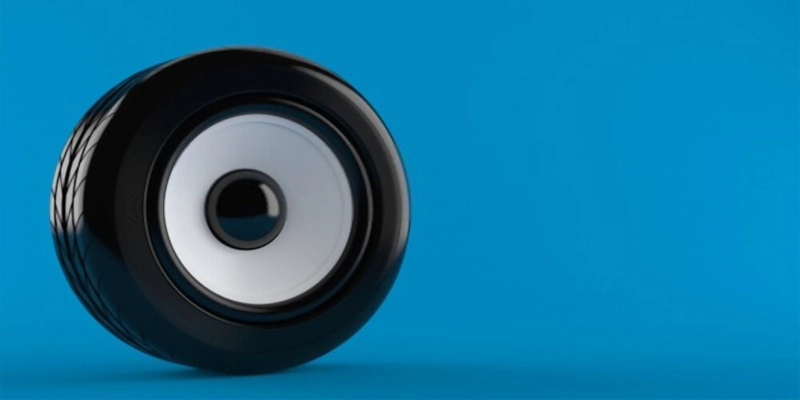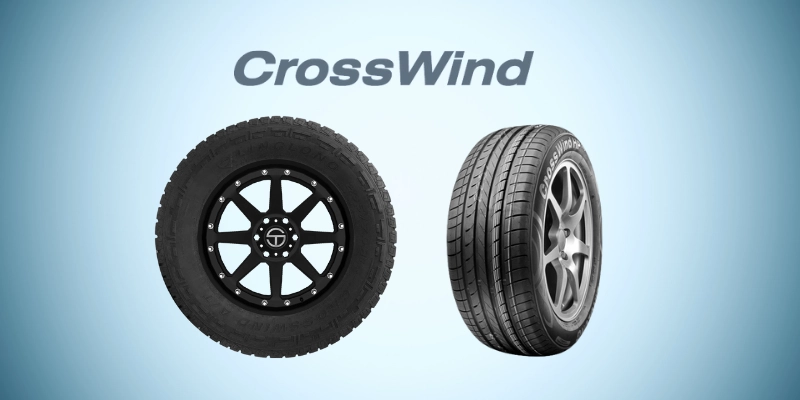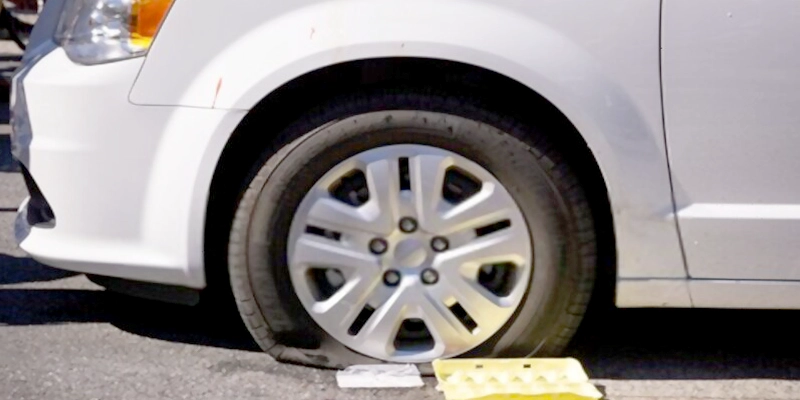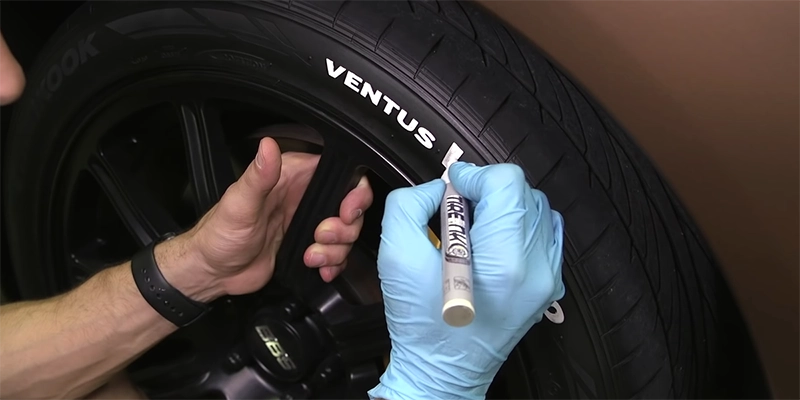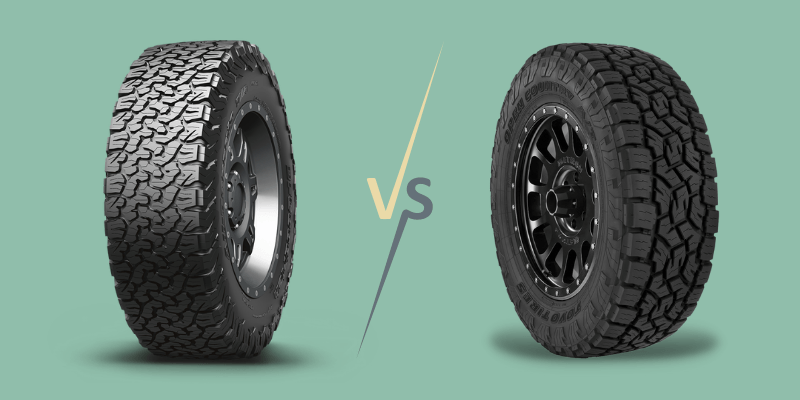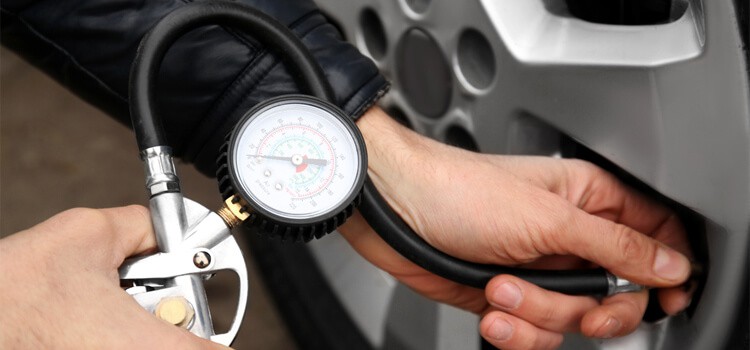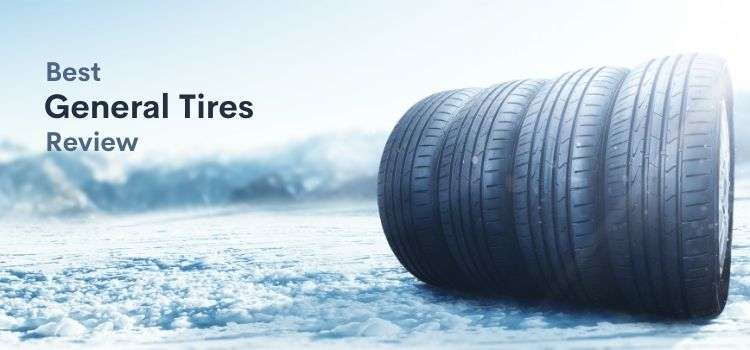Alright, Come on people! It’s high time that the tire of a car gets the same respect as the seatbelt. This Primewell tires review is going to do exactly that.
We’ve picked 4 models for our roundup, and we also prepared a little buyer’s guide to help you choose the right tire. Let’s get started with our review!
Top 4 best Primewell tire review
Primewell PS850 155 / 80R13 79
This variant of the PS850 all-season tire is more suitable for lighter and smaller passenger vehicles.
With a section width of 155 millimeters, this tire is good for narrower rims. Not only that but it’s also designed for smaller 13-inch rims.
The load index of 79 also means that this particular variant of the PS850 tire can take up to 963 pounds, allowing for a total of 3,852 pounds for a 4-tire set.
This is a lot, but it’s in the lower range of what modern passenger tires are capable of.
The PS850 tire is an all-season tire, so it should deliver good but not outstanding performance in winter and summer. With its decently deep treads, it also should perform well on wet surfaces.
Pros
- All-season tire
- A good option for smaller passenger cars
- Suitable for use with smaller 13-inch rims
Cons
- Low load index
- Won’t be outstanding in winter and summer
Primewell PS850 175 / 70R14 84
This particular Primewell PS850 radial tire is a more suitable option for mid-size passenger cars.
With a section width of 175 millimeters, this tire takes in moderately wide 14-inch rims. And having a tire section height of 122.5 millimeters – 70% of the section width – this tire is a little bit lower than the previous PS850.
The load index of this PS850 tire variant is noticeably higher – 84, which implies 1,102 pounds of max load per tire and 4,408 pounds for 4 tires. This should be solid enough for small to mid-size passenger cars.
And in terms of grip and performance, this tire model shouldn’t differ from the other PS850 tire too much since it again is an all-season tire with a similar tread pattern.
Pros
- Fit for all-season
- A good option for most passenger cars
Cons
- Won’t excel in winter and summer
Primewell Valera H/T
This variant of the PS850 all-season tire is a better option for larger and heavier passenger cars.
With a section width of 185 millimeters, this tire takes wider 14-inch rims.
Not only that, but this tire is a bit taller than the previous two PS850s, having a section height of 129.5 millimeters. If you have a larger car, this tire model may be the right one for you.
The load rating of this tire is also higher – 89, which means 1,279 pounds per tire and 5,116 pounds for 4 tires. Thus, this particular PS850 variant is better suited for heavier vehicles.
And, of course, this PS850 radial tire again is an all-season tire.
Pros
- All-season type
- The better option for heavier passenger cars
- Suitable for wider rims
Cons
- Will not excel in winter and summer
Primewell P255 / 65R17
Finally, we have a PS850 tire model which should be great for pretty heavy and large vehicles.
The load index of 96 means that a single tire can carry 1,565 pounds and 4 can carry a total of 6,260 pounds, which is a lot for passenger vehicles.
This tire is also wider, having a 215-millimeter section width, and higher, having 150.5 millimeters of section height. All these numbers mean that this PS850 tire is a better suit for larger cars.
And as you’d guess, this is an all-season tire, just like the other PS850 tires we overviewed earlier.
Pros
- All-season
- A great option for heavy passenger cars
- Suitable for very wide rims
Cons
- Won’t be exceptional in summer and winter
Choosing the best Primewell tires for your car
Now, we know what each of the Primewell tires reviewed offers, but how do you choose the right one from them? Not only that, if you have some other options in mind, how to know which one to buy?
Let’s try to answer these questions in our buying guide.
Types of tire
First, it’s important to know about the variety of tire types available out there. While all the Primewell tires reviewed are all-season, you should know about other types as well in case you are considering other tire options.
All-season tires
For those on a tighter budget, all-season tires are going to be a better option than tires specifically made for winter or summer. As mentioned above, the Primewell tire reviewed above is an all-season tire. Another example of all-season tires is Primewell ps830 850.
All-season tires deliver decent performance in any weather condition, but they aren’t going to be outstanding in any given situation. In summer, they are going to perform worse than summer tires, and the same goes for winter.
The thing that attracts car owners to all-season tires is that they are a more cost-efficient solution. Well, buying one set of all-season tires isn’t as costly as one set of summer and one set of winter tires.
There is also performance (e.g. Primewell PS860) and ultra-high performance all-season tires that provide better handling than regular all-season tires and have a better speed rating, but perhaps still not as good as specialized tires.
Winter tires
Winter tires offer excellent grip on snow and ice. Tires designed for winter use can be identified by their treads with larger gaps than in all-season and summer tires. Besides, winter tires usually have a snowflake symbol on the side.
Aside from providing increased grip on snow and ice, winter tires are designed to stay pliable at freezing temperatures, which helps maintain their grip.
And the rubber compound of winter tires tends to be much less durable than in other tire types.
There are also performance winter tires with a higher speed rating designed to deliver a better grip on snowy and icy surfaces, but they also aren’t too durable.
Summer tires
Summer tires have the smallest gaps between the treads, which allows for better handling on dry and wet surfaces. For those looking for the best handling experience, a set of summer tires in addition to winter tires is a good option.
Summer tires have a terrible grip on snowy and icy surfaces, which is expectable since they aren’t designed for them. Thus, if you opt for summer tires, you have to buy winter tires for winter use as well.
Summer tires can also be performance and ultra-high performance (e.g. Primewell PZ900).
Tire Label
Tires are assigned a label, e.g. Primewell 205 55R16 or 215/70R14 96S. These labels are exceptionally important to consider when selecting tires for your car.
Let’s overview how to decipher all those numbers and letters found in tire labels. We will break down 215/70R14 96S to help you read tire labels.
Size
The first number in the label – 215 – refers to the cross-section width of the tire in millimeters when unloaded. Cross-section width is also sometimes simply called section width.
The cross-section width of a tire is its width from sidewall to sidewall, not including any raised letters, protective ribs, or ornamentation. The overall width of a tire does include all letters and ornamentation.
The second number – in this case, 70 – is the ratio of the sidewall section height to the sidewall section width. 70 means that the section height is 70% of the tire’s section width. In our example, the section height of the sidewall will be 215 x 70% = 172 millimeters.
R means that the tire is a radial tire where the cord plies are oriented at 90 degrees to the direction of the travel. If you didn’t know, radial tires dissipate heat better than non-radial tires, allowing them to travel longer at high speeds.
Finally, the 14 after the R refers to the wheel rim diameter that the tire is designed for in inches. In our example, the label says that the tire takes 14-inch wheel rims.
Load Index
The number after the rim diameter – 96 in this case – refers to the load that each tire can carry safely.
A tire load index of 96 means that each tire can carry 1,565 pounds. If you multiply this by four, you will get the maximum load capacity of your car with the tires – 6,260 pounds in this case.
With that being said, a tire with a 96-load index won’t necessarily allow you to carry 6,260 pounds – the payload of your car will also matter, so keep that in mind.
It’s key to consider the load index of the tires you are looking through in order to pick the right set for your car. Your tires need to be durable enough to carry your car and everything in it, including passengers.
You may use the load index of the tires factory-installed on your vehicle. Do not buy tires with a lower load index than factory tires.
In passenger cars, the load index ranges from 70 to 126. Consult the load index chart go to see what carrying capacity each load index is associated with.
The speed rating is denoted by a letter at the very end of the tire label. This rating is the maximum speed when carrying the weight defined by the load index.
Speed rating
Among commonly used speed ratings are:
- Q – 99 mph. Typically used in winter tires.
- S (112 mph) or T (118 mph) – typically used in all seasons.
- H – 130 mph.
- V – 149 mph.
- ZR – 149+ mph.
- W – 168 mph.
- Y – 186 mph.
Treadwear warranty
Pay attention to the treadwear warranty that a tire is covered by. Some tires may not be covered by any warranties – most often, it’s winter tires.
The treadwear warranty is the distance that you are guaranteed to use the tires before they wear out.
Some people think that a treadwear warranty is useless since the actual number of miles you can get out of a tire depends on how you drive and whether the tires are properly inflated.
So you arguably don’t need to pay too much attention to a tire’s treadwear warranty.
Temperature and traction score
The temperature score denotes a tire’s temperature resistance, while the traction score denotes its wet-stopping ability. Temperature scores range from A to C (best to worst), while for traction, the scores range from AA to C (best to worst).
Manufacture data
Finally, pay attention to the tire manufacture date printed on the sidewall. It’s a 4-digit number, e.g. 3018, which means that the tire was manufactured during the 30th week of 2018. Don’t buy tires that are over a couple of years old.
So there you go. That was our ultimate Primewell tire review. This should help you take that final decision of whether to move ahead and select a Primewell tire next time you need one. Did it help? Let us know.
FAQs
Are Primewell tires good?
Who makes Primewell tires?
Who sells Primewell tires?
How bad are Primewell tires?
Related Post:
Resources:
- Tire load index chart, tiresplus.com
- How do tire warranties work, www.tirebuyer.com
- What is a tire speed rating, www.ntb.com

